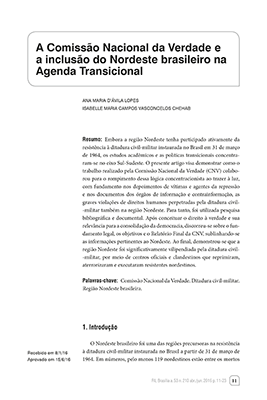A invisibilidade jurídica da exploração de recursos genéticos situados em oceanos além das jurisdições dos Estados costeiros
Bruno Torquato de Oliveira Naves
Maristela Aparecida de Oliveira Valadão
Resumo
A Convenção das Nações Unidas sobre o Direito do Mar (Montego Bay, 1982) definiu e aperfeiçoou zonas marinhas de influência dos Estados e estabeleceu a Área, constituída pelo leito do mar, fundos marinhos e seu subsolo para além dos limites da jurisdição nacional. Na regulação da Área, os recursos minerais nela encontrados foram considerados como patrimônio da humanidade. Não há, todavia, previsão quanto ao destino e titularidade dos recursos da biodiversidade. A Convenção sobre Diversidade Biológica, por sua vez, submete a biodiversidade, e consequentemente seus recursos genéticos, ao princípio da soberania, consagrando direitos dos Estados sobre os recursos naturais que estejam sob sua jurisdição. Há, pois, uma lacuna na regulação dos recursos genéticos marinhos se estes estiverem situados na Área. Propõe-se aqui a aproximação do Direito com a Ética ambiental, resgatando a solidariedade intrageracional e intergeracional e considerando os recursos genéticos da Área como patrimônio comum.
Palavras-chave
Direito do Mar. Meio ambiente. Oceanos. Recursos genéticos. Área. Biodiversidade.
Título, resumo e palavras-chave em inglês
LEGAL INVISIBILITY OF THE EXPLORATION OF GENETIC RESOURCES LOCATED IN OCEANS BEYOND OF COASTAL STATES JURISDICTIONS
ABSTRACT: The United Nations Convention on the Law of the Sea (UNCLOS III) delimited marine spaces under the influence of the States and established of the Area, consisting of the seabed, ocean floor and subsoil thereof, beyond the limits of national jurisdiction. In the regulation of Area, the mineral resources found in it were considered as a common heritage of mankind. However, the UNCLOS III does not foresee the destination and ownership of biodiversity resources. In its turn, the Convention on Biological Diversity submits biodiversity, and consequently their genetic resources, to the principle of sovereignty, enshrining rights of the States over natural resources under their jurisdiction, and guaranteeing them the right to regulate the terms of access to such resources, with the existence of the breakdown of their benefits. Thus, there is a gap in the regulation of marine genetic resources if they are located in the Area. The problem is increasing rapidly due to advancing technologies for exploiting ocean floor and the increasing number of patents relating to organisms discovered in the Area, while a new and more comprehensive legal regulation finds political barriers on the part of countries that currently benefit from exploitation. It is proposed to approach law with environmental ethics, rescuing intragenerational and intergenerational solidarity and considering the genetic resources of the Area as the common heritage. Finally, it is emphasized that the notion of common heritage should be modified to effectively cover the common resource management, with democratic participation and international cooperation.
KEYWORDS: LAW OF THE SEA. ENVIRONMENT. OCEANS. GENETIC RESOURCES. AREA. BIODIVERSITY.
Como citar este artigo
(ABNT)
NAVES, Bruno Torquato de Oliveira; VALADÃO, Maristela Aparecida de Oliveira. A invisibilidade jurídica da exploração de recursos genéticos situados em oceanos além das jurisdições dos Estados costeiros. Revista de informação legislativa: RIL, v. 52, n. 207, p. 81-103, jul./set. 2015. Disponível em: <https://www12.senado.leg.br/ril/edicoes/52/207/ril_v52_n207_p81>.
(APA)
Naves, B. T. de O., & Valadão, M. A. de O. (2015). A invisibilidade jurídica da exploração de recursos genéticos situados em oceanos além das jurisdições dos Estados costeiros. Revista de informação legislativa: RIL, 52(207), 81-103. Recuperado de https://www12.senado.leg.br/ril/edicoes/52/207/ril_v52_n207_p81
